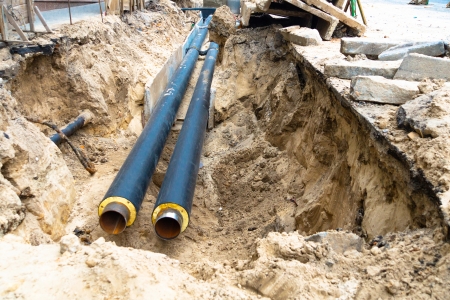From Cast Iron to Clay: Which Pipes Can Be Rehabilitated with Structural Lining?

If you're facing plumbing issues in an older home or commercial building, structural pipe lining may offer a game-changing solution—especially if you're hoping to avoid the mess and expense of excavation. But one common question property owners ask is, "Can my pipes actually be lined?" Whether your plumbing system is made from cast iron, clay, Orangeburg, or even PVC, the answer might surprise you.
Cast Iron Pipes: A Common Candidate
Cast iron pipes were widely used through the mid-20th century and are notorious for corrosion and scaling over time. As these pipes age, they often develop cracks, pinhole leaks, or severe buildup that slows flow and invites blockages. Fortunately, cast iron is one of the most common materials successfully rehabilitated using structural pipe lining methods like cured-in-place pipe (CIPP). The process essentially creates a new, durable pipe within the old one—without the need to dig up floors or landscaping.
Clay Pipes: Fragile but Lineable
Clay pipes were often used in sewer systems before plastic piping became standard. While clay is surprisingly durable, it's also brittle and prone to cracking under pressure or root intrusion. As long as the pipe's structure is mostly intact (i.e., not completely collapsed), structural lining can be applied to create a smooth, watertight interior that's resistant to future root invasion and leaks.
Orangeburg: Proceed with Caution
Orangeburg pipe—made from compressed tar paper—was a low-cost solution used in residential construction from the 1940s through the 1970s. Unfortunately, it degrades faster than nearly any other piping material. In some cases, if Orangeburg hasn't fully collapsed, it can be lined using CIPP. However, because it's extremely fragile, a thorough inspection by an experienced Upstate South Carolina plumber is critical to assess whether lining is feasible or a full replacement is needed.
PVC: Myth vs. Reality
Many people believe that PVC pipes can't be lined—but that's not always true. While PVC is a newer material and less likely to need rehabilitation, it can be lined under certain conditions. For example, if there are issues at joints, minor cracks, or root intrusions, structural lining may still be a viable option. A professional video inspection is the best way to determine if CIPP is appropriate.
The Bottom Line
When it comes to trenchless pipe repair, the type of material in your plumbing system plays a big role in determining whether structural pipe lining is the right solution. From corroded cast iron to cracked clay and questionable Orangeburg, modern lining techniques can breathe new life into aging infrastructure—often in a single day.
Want to know if your property qualifies for structural pipe lining? Let an expert take a look. If you're in need of a trusted Upstate South Carolina plumber, reach out to Mathis Plumbing & Heating Co., Inc.. We specialize in no-dig solutions that restore your plumbing and protect your property from further damage. Call today to schedule your inspection and discover the power of structural lining.
